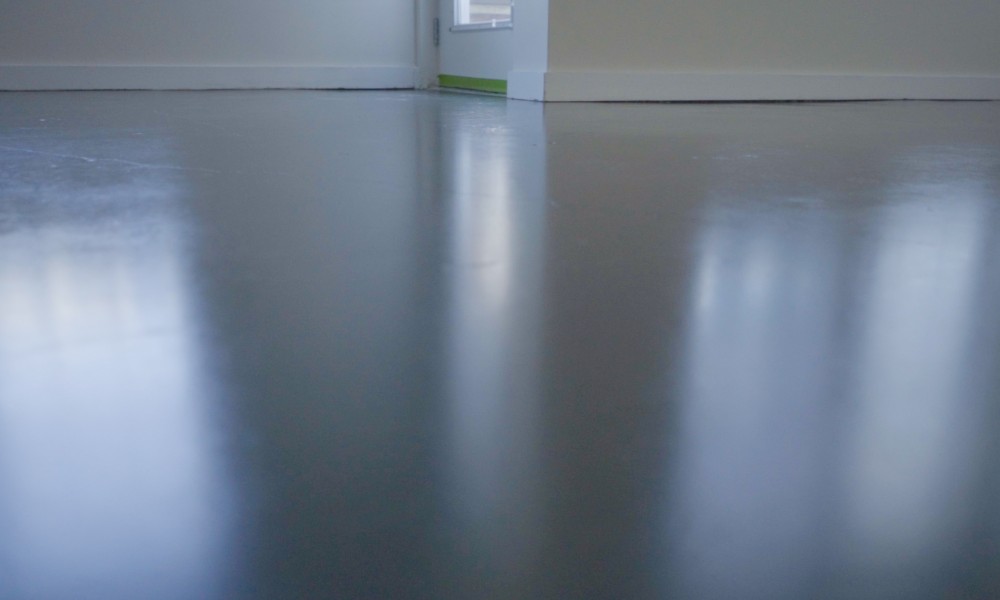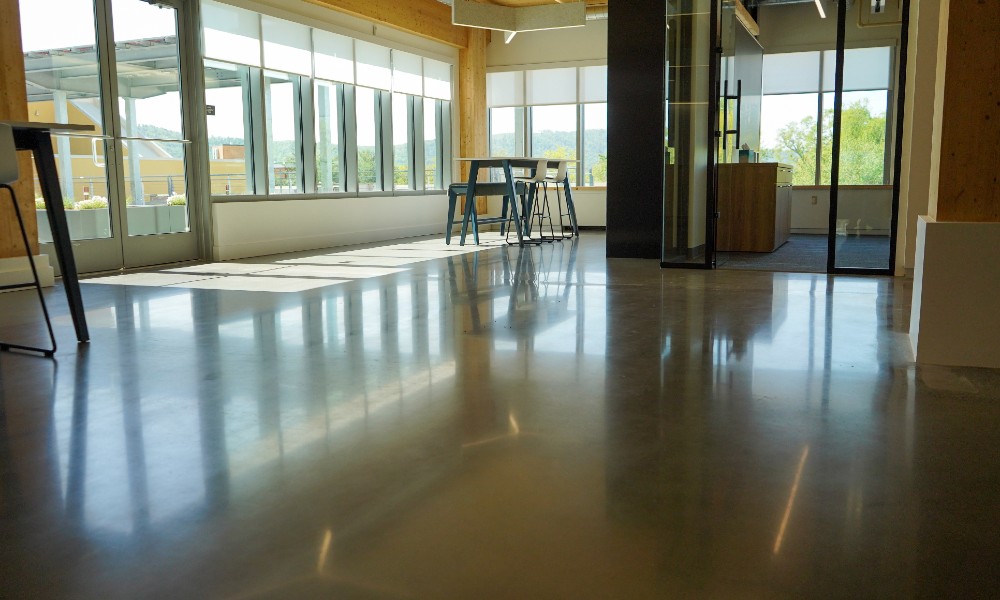Sealed Concrete vs. Polished Concrete Differences: The Ultimate Guide
Discover the differences between sealed concrete and polished concrete in this handy guide.
Key Takeaways:
- Although they look similar, polished concrete and sealed concrete are quite different
- Polished concrete involves grinding and polishing the floor to create a finish
- Sealed concrete involves installing an acrylic layer over top of the existing floor
- Your budget and preferences will determine the route you choose
Ask most people what the difference between sealed concrete and polished concrete is, and they probably won’t even know that there is one. At a glance, the shiny, smooth finish of both types of concrete may look the same and may therefore be considered interchangeable. However, there are distinct differences between sealed and polished concrete that set them apart.
The difference between these two methods of finishing lies in the preparation process, durability, and level of protection each offers. Understanding these differences will help you select the right type of concrete floor for your project. This comprehensive guide clears up the confusion and provides the information you need about sealed vs. polished concrete.

What is sealed concrete?
As its name suggests, sealed concrete is a concrete floor that has been sealed with an acrylic sealant. The sealer fills any imperfections on the concrete, like cracks, small holes, and pores. This gives the concrete a smooth, shiny finish that is resistant to staining and easy to clean.
Sealed concrete is an inexpensive, low-traffic flooring option popular in residential applications like garages and basements. It is also common in light commercial buildings such as small retail stores. Its duller matte finish and reduced durability may make it less desirable in high-traffic areas that require a more sophisticated look, such as office lobbies and restaurants.
What is polished concrete?
Polished concrete is a concrete floor that has been ground down, smoothed out, and then polished to create a smooth, shiny finish. The grinding process removes any imperfections on the concrete and leaves behind a smooth surface. The polishing process uses progressively finer grits of diamond pads to create a high-gloss, polished finish.
Running your finger over polished concrete will reveal a smooth surface with no cracks, holes, or pores. The level of reflectivity can range from a low-gloss matte finish to a high-gloss mirror-like finish. The level of reflectivity is determined by the amount of grinding and polishing done during the process.
Polished concrete is a popular flooring option in high-traffic areas that require a more elegant look, such as office lobbies, restaurants, and higher-end retail stores. Its sophisticated look comes at a higher price tag than sealed concrete, but its long-lasting durability and easy maintenance make it a wise investment.
5 differences between sealed concrete and polished concrete
With a clear understanding of what sealed and polished concrete is, let’s dive deeper into the key differences between these two finishing methods:
1. Preparation process
The preparation process is the most significant difference between sealed concrete and polished concrete. Sealed concrete is technically a bare concrete floor that has been filled with an acrylic sealer. Besides cleaning the floor and ensuring no cracks or holes, no additional preparation is required.
Polished concrete, on the other hand, is a multi-step process that involves shot blasting, grinding, and polishing the floor to create a smooth, shiny finish. Densifying the concrete is also essential to the process as it strengthens the floor, adds a deeper, richer color, and makes it more resistant to staining.
2. Level of durability
Polished concrete floors are significantly more durable than sealed concrete floors. The grinding and polishing process creates a harder, denser surface that is less prone to chipping, cracking, and staining. The chemical densifiers used in the process also improve the floor’s durability by increasing its abrasion resistance.
Sealed concrete floors are more susceptible to chipping and cracking because the sealer sits on top of the concrete but does not penetrate it. This makes sealed concrete floors more susceptible to wear and tear and less suited for high-traffic areas.
3. Level of protection
The multiple steps in the polished concrete process make it a more protective flooring option. The initial shot blasting step removes any impurities on the surface of the concrete, such as dirt, oil, and grease. This ensures that the floor is clean and free of any contaminants that could cause stains.
The densifier used in the process fills in the pores of the concrete, hardens the surface, and makes it more resistant to staining. Additionally, the sealer used in the polished concrete process protects the floor from moisture, dirt, and other contaminants.
Sealed concrete floors only have a thin layer of acrylic sealer for protection. While this offers some protection from staining, it requires frequent cleaning and regular maintenance to keep the floor looking its best.
4. Shine and reflectivity
Unlike sealed concrete floors with a dull finish, polished concrete floors have a high-gloss, reflective finish achieved using fine-grit diamond pads in each successive step of the grinding and polishing process. A high-gloss polished concrete floor will have a mirror-like finish, while a low-gloss polished concrete floor will have more of a matte finish.
The shiny, reflective surface of polished concrete makes it an excellent choice for high-traffic areas, as the light reflection creates an illusion of space and makes the room appear brighter and more welcoming. Sealed concrete floors have a duller, non-reflective finish that can make an area appear less aesthetically pleasing.
5. Cost
When choosing between sealed and polished concrete, cost is always a factor as well. Sealed concrete is a more budget-friendly option as it requires minimal preparation and can be done without specialized equipment. Concrete sealing costs about $1.50 per square foot, setting you back $1,500 for a 1,000-square-foot floor.
Polished concrete is more expensive, but the long-term benefits often outweigh the initial cost. The multi-step process requires specialized equipment and trained professionals, which can add to the price. The cost of polished concrete ranges from $3 to $8 per square for basic finishes and $8 to $16 per square foot for high-end finishes.
So, what’s the difference between sealed concrete and polished concrete? Polished concrete is a more durable, protective, and shiny flooring option but comes at a higher cost. Sealed concrete is a more budget-friendly option but does not offer the same level of protection or shine.
Which concrete finish is right for you?
The type of concrete finish you choose will depend on your budget, the level of durability and protection you need, and the look you want. If you’re looking for a durable, low-maintenance floor that can withstand high traffic and is easy to keep clean, polished concrete is the way to go. Sealed concrete may be the better option if you’re working with a tight budget and don’t need an ultra-durable surface.
Whichever route you choose, at Concreate, we can help you achieve the perfect finish for your space. We offer quality concrete services, including installation, sealing, and polishing. Get in touch with us today or visit thisisconcrete.com for more information.

